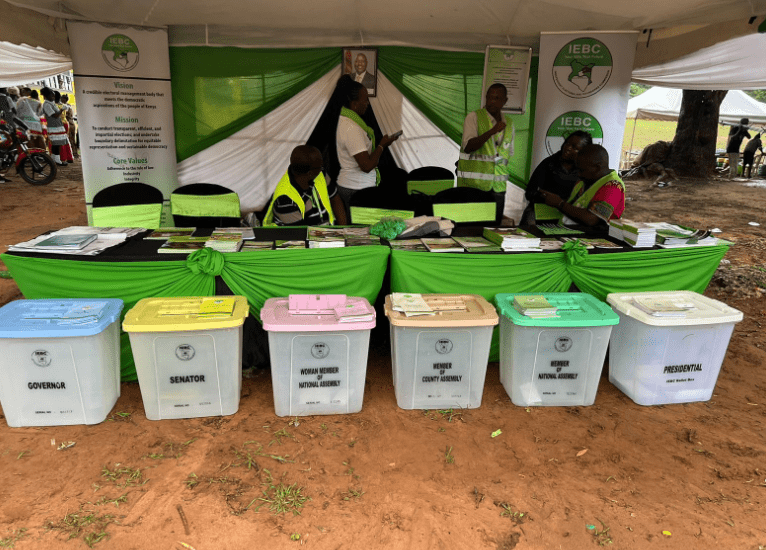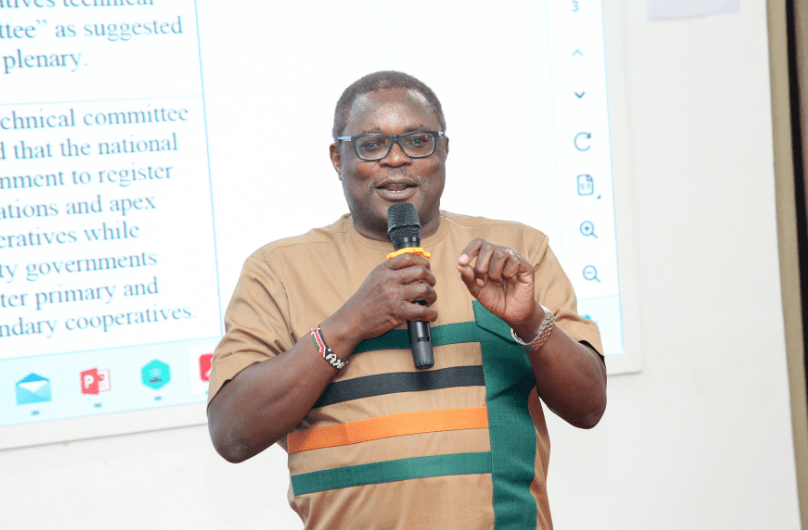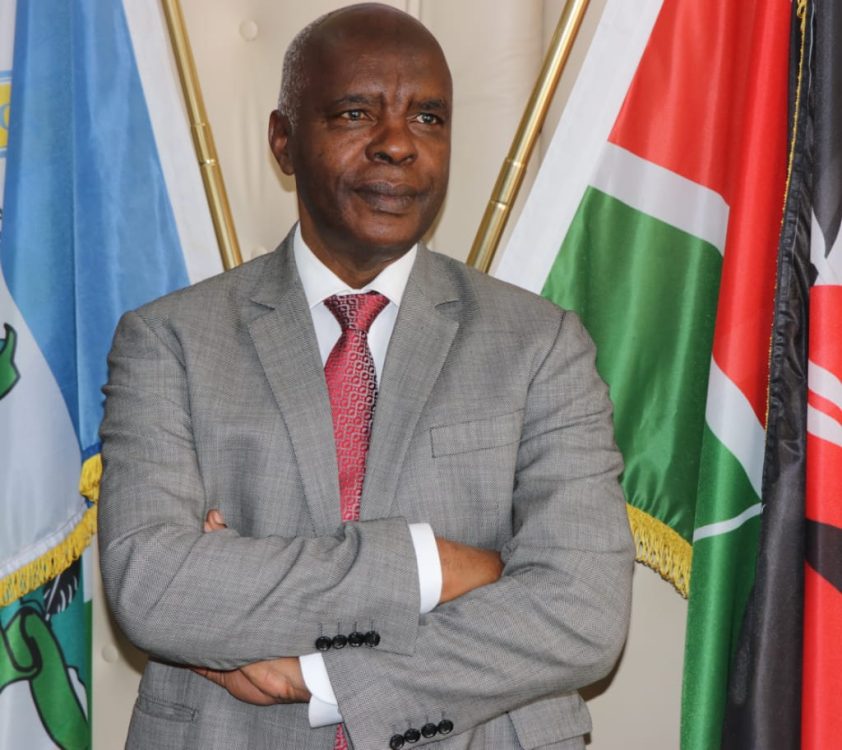Coalitions in ‘Big vs Small’ contest ahead of 2027 election

As new political realignment coalescing around communities takes shape in the country, analysts believe young voters are expected to play a key role and be kingmakers in the 2027 General Election.
This is despite the political groupings, pitting the ‘Big tribes’ against the ‘Small tribes’, which is slowly taking shape in the country amid warnings of arousing animosity and divisions ahead of the high-voltage campaigns and elections.
Renowned political commentator Ayub Mwangi believes young voters could be pivotal.
According to Mwangi, voter mobilisation, especially among the youth, will determine the outcome.
“The government may prefer Gen Z to stick to memes and protests, but what truly scares them is mobilisation at the grassroots, door-to-door campaigns like Jubilee did in 2013,” he adds, noting that if the opposition captures Gen Z and gets them to the ballot, they will be miles ahead before the election even starts.
Fresh face
Mwangi also believes DCP leader Rigathi Gachagua holds the kingmaker card.
The analyst believes that whichever side he supports is likely to win. However, if he runs against Ruto, the president will easily get his second term.
“Gachagua has a base: He’s loud, reactive, and persistent—and that plays well in politics,” he stated.
The analyst sees former Interior Cabinet Secretary Fred Matiang’i as a fresh face with potential, but warns internal friction, especially with Kalonzo Musyoka, could derail any serious bid.
“If Kalonzo refuses to cede ground, he risks political embarrassment,” Mwangi says.
Human rights advocate and veteran politician Gitobu Imanyara concurs while emphasising turnout over conspiracy theories.
“With an estimated 27 million voters in 2027, even a 75 per cent turnout means 20 million ballots,” he says, “Even if a million votes were manipulated, that’s just 5 per cent of the total. Yes, it’s significant, but nowhere near enough to counter mass mobilisation.”
Imanyara warns against defeatist narratives, arguing that assuming Ruto will win through rigging is lazy and demoralising because it distracts from the work of organising, registering, mobilising and voting.
“Power lies in turnout. If the opposition can galvanise voters, especially the youth, no amount of state machinery can override that momentum,” he says.
Veteran political scientist Mutahi Ngunyi, famed for his ‘Tyranny of Numbers’ theory that correctly predicted Uhuru Kenyatta’s 2013 election win, is back with a new forecast that President Ruto will clinch re-election in 2027, in what Ngunyi calls a ‘Tyranny of Small Numbers’.
Ngunyi argues that despite historical dominance by Central Kenya in shaping election outcomes, Ruto’s presidency has already disrupted that trend, and could consolidate power further by mobilising traditionally fragmented voter blocs.
Ngunyi interprets this allegory as a cynical strategy; inflict economic pain and disillusionment, then offer minor concessions to win loyalty.
He argues Ruto could apply a similar approach, particularly targeting Central Kenya voters and Gen Z.
IEBC data projects over 5.6 million new voters by 2027, largely composed of young Kenyans who will be crucial in shaping the upcoming election.
By the end of the current electoral cycle, Kenya is expected to have about 27.8 million registered voters, up from 22.1 million in 2022.
According to Ngunyi, if Ruto successfully harnesses the support of the Luo, Kalenjin, Maasai, Somali, Coastal, and Indian communities, he could secure a staggering 14.1 million votes, effectively outpacing what he dubs the ‘Coalition of Cousins’.
The emerging opposition alliance includes Gachagua, Kalonzo, former Cabinet Secretaries Eugene Wamalwa, Matiang’i, Mithika Linturi, and PLP’s Martha Karua.
Other political bigwigs in this camp are former CS Justin Muturi and former UDA Secretary General Cleophas Malala.
It is not clear whether Trans Nzoia Governor George Natembeya of DAP-K is on the bandwagon.
Last week, while in Kitui the Gachagua team was also joined by former Agriculture CS Peter Munya.
Ngunyi’s breakdown puts the opposition at a potential 9.6 million votes, based on current voter registration figures.
His analysis relies heavily on ethnic voting patterns, which have historically shaped Kenyan politics.
Ngunyi, too, suggests the game changer could be the Gen Z demographic -youthful, vocal, and increasingly disillusioned.
Through his Fifth Estate channel, he likens Ruto’s strategy to a brutal yet calculated metaphor involving Soviet dictator Joseph Stalin and a live chicken.
“Stalin plucked a live chicken feather by feather until it was raw and bleeding,” Ngunyi narrates.
“Then he fed it crumbs—and the chicken followed him everywhere.”
The Ruto camp is angling to reap big from the President’s dalliance with ODM leader Raila Odinga, who enjoys near-fanatical support in some parts of the country, including Nyanza, Nairobi and the Coast.
The Ruto-Raila camp also holds much sway in North Eastern and the Rift Valley.
In Western, Ruto hopes to eat into Raila’s support in the area and also benefit from Prime Cabinet Secretary Musalia Mudavadi and Ford-K leader Moses Wetang’ula’s following.
Homa Bay Town MP Peter Kaluma has hit out the Gachagua camp for allegedly promoting tribalism through the Coalition Cousins.
“When Gachagua was DP and was given 8 Cabinet positions, he took all to Kikuyus. When the Cabinet was disbanded and he was given 6 slots, he picked all Kikuyus. Didn’t he realise Kambas are cousins then?” Kaluma, who has become a staunch supporter of the Ruto-Raila broad-based arrangement, said, adding that the former DP is a divisive character looking for people to misuse.














